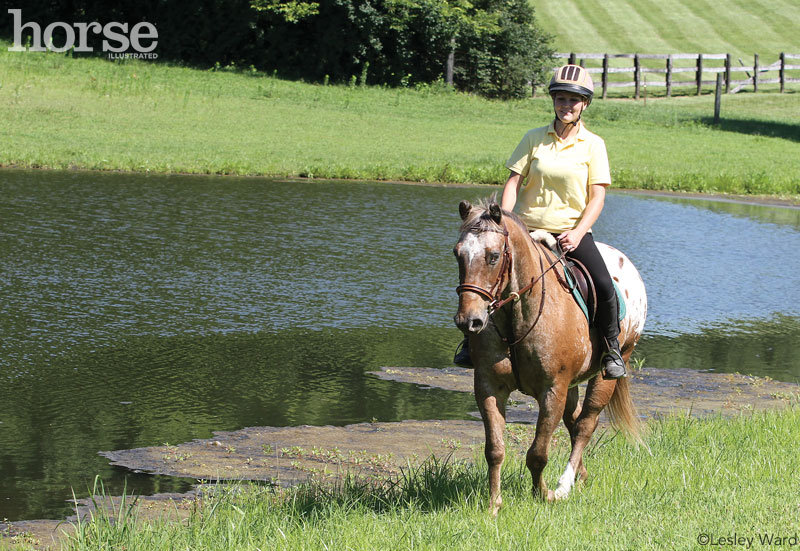
A: Any horse with arthritis benefits from the ability to move around freely, such as in a pasture or large paddock. Confinement to a small area like a stall or run often causes joints to stiffen up and increases pain. So to start, it’s important that your horse has access to turnout, ideally 24/7 if possible. If she shouldn’t have access to full-time pasture for weight control, then at the very least, give her plenty of room to wander about in a large dry lot. This will help keep her joints limber and lubricated as she moves.
As for any additional exercise, the amount she can tolerate is going to depend greatly on which joints are affected and how advanced the arthritis is. It’s always best to consult your veterinarian regarding the specific needs of your horse and her particular problems.
In general, however, some light riding is possible for many aged horses with advanced arthritis. Stick to level ground that is free of rocks or ruts, and is as soft as possible. Don’t ask her to perform tight circle work, as that puts an increased strain on affected joints. Riding her out on nice trails at a walk is good for her circulation, muscle tone and mind. Another option is to pony her, which is less effort (by as much as 30 percent), since she doesn’t have to carry a rider and tack. Just make sure the horse you pony her from has a gait that she can match without overstressing her condition or ability. Similarly, if you ride with a friend, be sure your mare is able to maintain a comfortable pace with another horse.
A sensible warm-up and cool-down are important exercise routines for every horse, but particularly for an older horse with arthritis. There are instances where using ice packs following exercise can help to limit inflammation. In cases where a joint can be injected directly, this veterinarian-administered treatment is often very effective for limiting arthritic pain so that your mare stays active and is able to be ridden.
Keeping an elderly horse toned and active does wonders for longevity and quality of life, but always be mindful of your mare’s comfort level. Your veterinarian can help you learn the signs that would warrant decreasing your horse’s exercise regimen.
Liked this article? Here are others on senior horse health:
Managing Arthritis in Horses
Senior Horses: Aged to Perfection
This article originally appeared in the October 2014 issue of Horse Illustrated magazine. Click here to subscribe!





